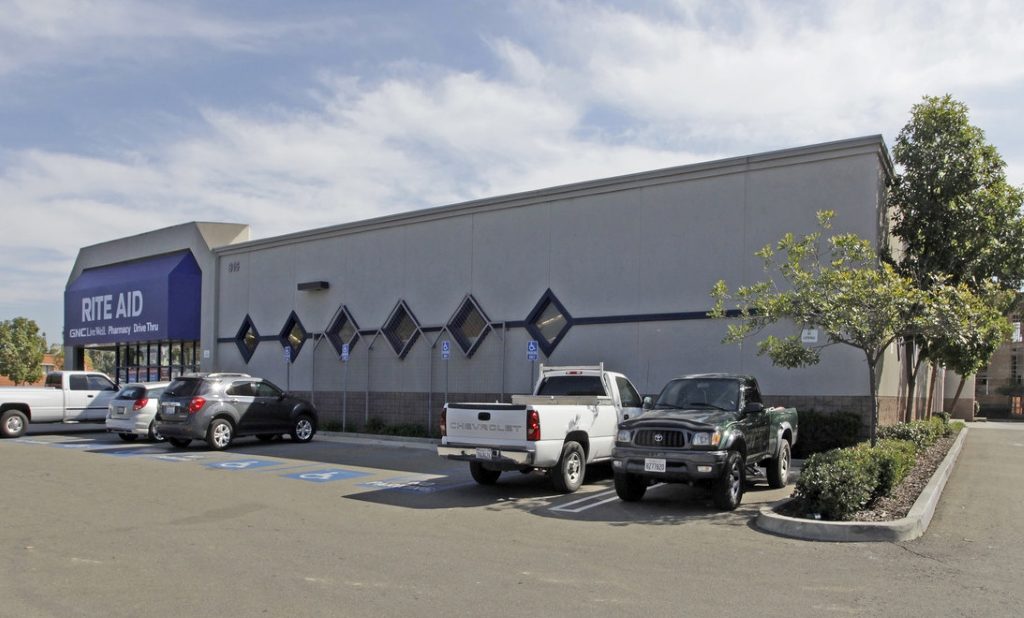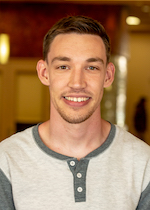Daily Business Report-Nov. 1, 2019
A hinge burns on Baker Canyon at Husk Ave. from the Tick Fire in Canyon Country, Oct. 24, 2019. (Photo by Hans Gutknecht, Los Angeles Daily News/SCNG)
Why don’t we ban homebuilding
in California areas of high risk?
CALmatters.org
The idea: One in three homes in California is in an area at risk for wildfire. Those residences, poised on the edge of, and sometimes in the midst of rugged, flammable wildlands, are increasingly in peril. And too often, only the rich can afford the kind of insurance that’s necessary to rebuild.
The pros: This is a zoning issue. If people can be prohibited from building in a flood plain, or warned about living on a fault line — why not write ordinances that either say no to building in dangerous places or require homeowners and businesses to sign a waiver absolving authorities from the need to provide fire protection to them?
The cons: Property rights are big in American jurisprudence. People want to build where they choose and get irritated when the state steps on local control. Sometimes financial necessity forces people to homes in rural places. And build-at-your-own-risk isn’t the mantra of a society that believes public safety is part of a government’s role.
The odds: Imagine a local elected official telling a property developer — who may or may not donate to political campaigns — that we will no longer make room on forested hills for new luxury subdivisions, with their alluring property tax potential. Not gonna happen.
In any case, Gov. Gavin Newsom has rejected such a building ban, telling the Associated Press in April, “There’s something that is truly Californian about the wilderness and the wild and pioneering spirit.” Odds are zip.
_______________________

MTS launches region’s first
zero-emission bus pilot program
The San Diego Metropolitan Transit System (MTS) is launching a pilot program of Zero-Emissions Buses that run on electric battery power. The vehicles are first-of-their-kind in the region and represent the next leap forward in the transit agency’s leadership in providing connected communities, cleaner air and less traffic.
MTS has acquired six New Flyer Xcelsior Charge battery electric buses. Their use cuts tailpipe emissions by 100 percent, immediately improving air quality and helping the region achieve climate action goals.
The pilot program begins Nov. 4 with testing on multiple routes around San Diego. Following several weeks of route validation, the buses will go into passenger service in late November.
Today, MTS’s 40- and 60-foot fixed route buses are fueled by compressed natural gas (CNG). State regulations require public transit agencies to gradually transition to all-ZEB fleets by 2040. MTS is preparing for that mandate by initiating this pilot program, which allows MTS staff to analyze vehicle performance under various conditions and train drivers on the most efficient driving habits.
The board-approved budget for the pilot program is $12.5 million.
_______________________

Goodwill Industries purchases Rite Aid
building in Escondido for $6.08 million
Goodwill Industries of San Diego has purchased a 17,908-square-foot retail building at 315 W. Washington Ave. in Escondido for $6.08 million. The Rite Aid building sits on a 2.12-acre lot and is adjacent to Escondido City Hall and the California Center for the Arts.
Michael Golden of Lee & Associates – North San Diego County represented the seller, Malakooti & Kaikavoosnejad Revocable Trust. Goodwill Industries of San Diego, was represented by Bryan Cunningham of Flocke & Avoyer.
_______________________
Port of San Diego receives top
honors for environmental reports
The Port of San Diego has received two prestigious recognitions from the Association of Environmental Professionals, San Diego Chapter. The awards were presented at the Association’s Annual Awards and Scholarship Event held Oct. 24 in San Diego.
The Port earned an Outstanding Technical Report Award for its Sea Level Rise Vulnerability Assessment and Coastal Resiliency Report. The report assesses how the Port proposes to address projected sea level rise.
The Port and its partners at the California State Lands Commission received the Outstanding Public Involvement Award for the San Diego Ocean Planning Partnership Preliminary Assessment Report.
_______________________

Mysterious microproteins have
major implications for human disease
As the tools to study biology improve, researchers are beginning to uncover details into microproteins, small components that appear to be key to some cellular processes, including those involved with cancer. Proteins are made up of chains of linked amino acids and the average human protein contains around 300 amino acids. Meanwhile, microproteins have fewer than 100 amino acids.
One such microprotein is the 54-amino acid microprotein called PIGBOS, which Salk scientists recently showed contributes to mitigating cell stress. The work, published on Oct. 25, 2019, in the journal Nature Communications, indicates that PIGBOS could be a target for human disease.
“This study is exciting because cell stress is important in a number of different diseases, including cancer and neurodegeneration,” says Salk Professor Alan Saghatelian, co-corresponding author of the study. “By understanding the mechanisms behind these diseases, we think we’ll have a better shot at treating them.”
_______________________
Pacific Southwest Museum event features
Shotgun Tom Kelly as keynote speaker
The Pacific Southwest Railway Museum Association (PSRM), a San Diego-area historical and educational nonprofit, will mark the 100-year anniversary of the completion of the San Diego & Arizona Railway (SD&A) by hosting its SD&A Centennial Gala Dinner starting at 6 p.m. today at the John D. Spreckels Center, 1019 7th St., Coronado. The public is invited to attend the nonprofit’s fundraiser. Tickets are priced at $100 per person. For more information and to RSVP, visit www.psrm.org/centennial.
Keynote speaker will be Tom Irwin, radio broadcasting legend known as “Shotgun Tom Kelly,” who has worked in radio and TV for 51 years and was honored with his own star on the iconic Hollywood Walk of Fame in 2013. Irwin, 70, known for his Smokey Bear-style ranger hat, is currently the host of “60s on 6,” heard on SiriusXM from 4 to 9 p.m. Pacific Time, on Mondays, Tuesdays, Thursdays and Fridays.
_______________________
Groundbreaking program secures MiraCosta College
students work-based learning with Northrop Grumman


MiraCosta College student Matthew Sheehan is making history. Sheehan, a 26-year-old Marine Corps veteran, is among the first cohort of students taking part in a groundbreaking Northrop Grumman Corporation-led program offering community college students enrolled in science, technology, engineering, and mathematics (STEM) with paid, work-based learning opportunities and a pathway to qualification for careers in the aerospace and defense industries.
Sheehan, a Temecula resident and computer science major, began working part-time at Northrop Grumman in September as an engineering assistant/technician, putting his software skills to use automating various testing procedures with a team assigned to high-altitude, autonomous aircraft.
“I’m getting relevant experience and a foot in the door, and the fact that I will be able to put the Northrop Grumman name on my resume is pretty valuable in and of itself,” Sheehan said. “That Northrop Grumman is a defense contractor makes it even more valuable for this line of work.”
The pay, a competitive hourly wage, isn’t bad, either. At the moment, he is working 14 hours per week.
MiraCosta College student Jeannelle Balilo has never shied away from a challenge. It’s one of the reasons she enlisted in the Navy, it’s why she is seeking a career in a male-dominated STEM field and it’s why she is taking part in the groundbreaking, Northrop Grumman-led, work-based learning opportunity.
Balilo, 26, is learning to write computer programs and test state-of-the-art software for an unmanned helicopter being developed by the defense contractor. “It is fun, but it is challenging, too, and there is nothing better for me than to be challenged,” Balilo said. “They’re allowing me to do things I never thought an intern would be allowed to do. I’m definitely not making coffee or cleaning up the offices. I love it there,” she added. “It’s amazing and I feel like I fit in really well.”
Northrop Grumman’s talent pipeline program evolved through the company’s involvement with San Diego Regional Economic Corporation’s Inclusive Growth Steering Committee and support for the Advancing San Diego initiative aimed at aligning local industries with workforce development programs and regional education systems.
_______________________
USD School of Law hosts Climate
and Energy Law Symposium
The University of San Diego School of Law presents its 11th annual Climate and Energy Law Symposium on Friday, Nov. 8. At this year’s symposium, regulators, utility executives, scholars, and other experts will discuss how wildfires are affecting the operation of California’s electricity grid.
The event takes place from 8 a.m. to 6:30 p.m. in USD’s Mother Rosalie Hill Hall in Warren Auditorium on the west end of campus.
“Recent wildfires and power shut off events throughout California — and in the San Diego region — have highlighted the challenge of operating an electric utility in a changing climate,” said Scott Anders, director of the Energy Policy Initiatives Center at the law school. “We have a great lineup of speakers, including utility executives, regulators, and energy industry experts, to help us sort through all the issues related to California’s policies to prevent and mitigate wildfires.”



